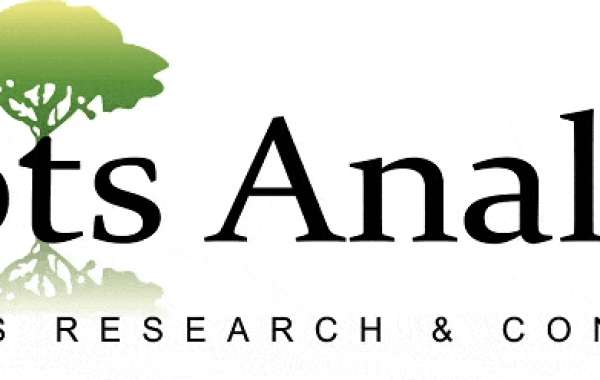- A detailed review of the current market landscape of targeted protein degradation -based therapeutics, including information on type of protein degrader (degronimids, ENDTACs, epichaperome inhibitors, hydrophobic tags, IMiDs, LYTACs, molecular glues, PHOTACs, PROTACs, protein homeostatic modulators, SARDs, SERDs, SNIPERs, and specific BET and DUB inhibitors), phase of development (clinical, preclinical, and discovery stage) of product candidates, target indication(s), key therapeutic area(s), type of biological target(s), associated ubiquitin ligase(s) (if available), target signaling pathway (if available), mechanism of action (if available), type of therapy (monotherapy and combination therapy), route of administration (oral, intravenous and others). In addition, it presents a list on drug / therapy developer(s) (such as year of establishment, company size and location of headquarters), clinical study sponsor(s) and collaborator(s).
- An overview of the overall landscape of target protein degradation enabling technologies, featuring an analysis based on type of degrader. In addition, it presents a list of targeted protein degradation enabling technology developers and analysis based on various parameters, such as year of establishment, company size and location of headquarters.
- Detailed profiles of prominent players engaged in the development of targeted protein degraders (shortlisted on the basis of phase of development of pipeline products). Each profile features a brief overview of the company, its financial information (if available), detailed description of their respective lead drug candidates, and recent developments and an informed future outlook. Additionally, each drug profile features information on the type of drug, current status of development, route of administration, target indications, and a brief summary of its developmental history.
- Tabulated profiles of leading industry players (shortlisted on the basis of the number of candidates in development pipeline). Each profile includes details on the innovator company (such as year of establishment, location of headquarters, number of employees, and key members of the executive team), recent developments, along with information on respective drug candidates.
- An in-depth analysis of completed, ongoing and planned studies of various targeted protein degraders, highlighting prevalent trends across various relevant parameters, such as current trial status, trial registration year, enrolled patient population and regional distribution of trials, type of protein degrader, phase of development, study design, leading industry and non-industry players (in terms of number of trials conducted), trial focus, target therapeutic area, key indications, and clinical endpoints.
- A detailed analysis of grants that have been awarded to various research institutes for targeted protein degradation projects, in the period between 2017 and 2020, on the basis of important parameters, such as year of award, amount awarded, administering institute center, support period, funding mechanism, type of grant application, purpose of grant award, activity code, emerging focus areas of the grants, study section, popular NIH departments, study section, and type of recipient organization, highlighting popular recipient organizations, popular program officers and regional distribution of recipient organizations.
- A detailed publication analysis peer-reviewed, scientific articles that have been published between 2017 and Q3 2019, highlighting the research focus within the industry. It also highlights the key trends observed across publications, including information on type of publication, year of publication, study objective, popular keywords, type of protein degrader, biological target, associated ubiquitin enzyme, number of publications, type of publisher, leading players (in terms of number of publications), region, and key journals (in terms of number of articles published in this domain and impact factor of the journal).
- An insightful analysis of the patents filed / granted for targeted protein degradation enabling technologies, since 2018, taking into consideration various parameters, such as type of patent, publication year, geographical location, type of applicant, issuing authority / patent offices involved, CPC symbols, emerging focus areas, leading players (in terms of number of patents granted / filed in the given time period), patent characteristics and geography. The chapter also includes a detailed patent benchmarking and an insightful valuation analysis.
- A list of key opinion leaders (KOLs) within this domain, and their assessment (based on the strength and activeness) represented in the form of 2×2 matrices. The chapter also includes a schematic world map representation (highlighting the geographical locations of eminent scientists / researchers) and an analysis evaluating the (relative) level of expertise of different KOLs, based on number of publications, number of citations, participation in clinical trials, number of affiliations and strength of professional network (based on information available on ResearchGate).
- An analysis of the partnerships that have been established in this domain, during the period 2014-2020, covering research agreements, product / technology licensing agreements, mergers / acquisitions, asset purchase agreements, RD and commercialization agreements, IP licensing agreements, clinical trial agreements, product development agreements, and other relevant deals.
- An analysis of the investments in the form of seed financing, venture capital financing, debt financing, grants / awards, initial public offerings (IPOs) and subsequent offerings, made at various stages of development of the companies engaged in this field.
- A detailed deal structure analysis, highlighting cash flows and net present values of licensor and licensee, taking into consideration multiple likely scenarios of upfront, milestone and royalty payments.
The report also features the likely distribution of the current and forecasted opportunity across important market segments, mentioned below:
The USD 3.3 billion (by 2030) financial opportunity within the targeted protein degradation enabling technologies market has been analyzed across the following segments:
- Type of Payment
- Upfront Payment
- Milestone Payment
- Types of Protein Degraders
- Degronimids
- PROTACs
- SARDs / SERDs
- Specific BET and DUB Inhibitors
- Other Inhibitors
- Therapeutic Areas
- Oncological Disorders
- Neurological Disorders
- Others
- Route of Administration
- Oral
- Intravenous
- Others
- Key Geographical Regions
- North America
- Europe
- Asia-Pacific
Transcripts of interviews held with following senior level representative of stakeholder companies:
- Laura Itzhaki, Founder and Chief Scientific Officer, Polyprox Therapeutics
- Louise Bergeron, Vice President, Xios Therapeutics
- Martin Wiles, Vice President Business Development and Licensing, Almac Discovery Gerald Gavory, Director of Biology, Almac Discovery
- Jason Brown, Scientific and Business Development Director, Ubiquigent
- Anonymous, Director of Oncology Research, Large Company
- Anonymous, Chief Scientific Officer, Very Small Company
- Paul Wallace, Chief Business Officer, Mission Therapeutics
- Katrin Rittinger, Research Group Leader, Francis Crick Institute
Zhihao Zhuang, Associate Professor, Department of Chemistry and Biochemistry, University of Delaware
To request a sample copy / brochure of this report, please visit this - https://www.rootsanalysis.com/reports/289/request-sample.html
Key Questions Answered
- Who are the leading industry and non-industry players in this market?
- What are the key therapeutic areas for which targeted protein degraders are being / have been developed?
- Which geographies are more active in conducting clinical trials on targeted protein degraders?
- What kind of partnership models are commonly adopted by industry stakeholders?
- Which are the leading administering institute centers supporting research in this domain?
- What is the trend of capital investments in the targeted protein degradation market?
- How has the intellectual property landscape in this market evolved over the years?
- How is the current and future market opportunity likely to be distributed across key market segments?
You may also be interested in the following titles:
- Immunocytokines Market, 2021–2030
- Non-Viral Drug Delivery Systems Market, 2021-2030
- TCR-based Therapies Market, 2021-2030
About Roots Analysis
Roots Analysis is one of the fastest growing market research companies, sharing fresh and independent perspectives in the bio-pharmaceutical industry. The in-depth research, analysis and insights are driven by an experienced leadership team which has gained many years of significant experience in this sector. If you’d like help with your growing business needs, get in touch at info@rootsanalysis.com
Contact Information
Roots Analysis Private Limited
Gaurav Chaudhary
+1 (415) 800 3415
Facebook - https://www.facebook.com/RootsAnalysis
LinkedIn - https://www.linkedin.com/company/roots-analysis/mycompany/
Twitter - https://twitter.com/RootsAnalysis








